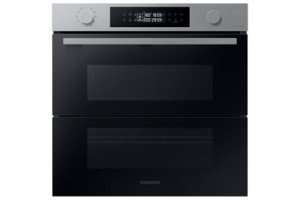The Integrated Kitchen: A Harmonious Blend of Functionality and Aesthetics
In today's busy world, the kitchen has evolved from a simple cooking area to a multifunctional center that balances with the overall circulation of the home. The integrated kitchen principle is at the leading edge of this improvement, integrating aesthetics with functionality. This post explores the principles of integrated kitchen areas, their benefits, and vital style components, ensuring you understand what makes this modern-day kitchen layout so enticing.
What Is an Integrated Kitchen?
An integrated kitchen is designed to perfectly blend with the other living areas in a home, eschewing the standard separation of the kitchen from the living and dining areas. This method emphasizes open floor plans, efficient use of area, and cohesive style to develop a unified look.
Secret Features of an Integrated Kitchen
- Open Layout: The substantial feature of an integrated kitchen is its openness. Walls between the kitchen, dining, and living areas are frequently removed to develop a free-flowing space.
- Unified Design Aesthetics: The design of an integrated kitchen typically reflects the design of the adjoining areas. Cabinets can match the living room furnishings, and color design can be collaborated for a harmonious appearance.
- Practical Zones: While it is open, an integrated kitchen still keeps practical zones-- cooking, preparing, and dining-- to ensure usability.
- Smart Storage Solutions: Integrated kitchens use clever storage alternatives like pull-out cabinets, concealed appliances, and built-in shelving to keep clutter at bay.
- Multi-Use Furniture: Island countertops, for instance, are not simply for prep work however can act as dining surface areas or communal areas.
Benefits of an Integrated Kitchen
The combination of kitchen areas produces numerous benefits:
| Benefit | Description |
|---|---|
| Space Optimization | Makes the most of using available area, specifically in smaller sized homes. |
| Boosted Social Interaction | Fosters interaction and interaction among member of the family while cooking, dining, or amusing. |
| Increased Natural Light | An open layout permits much better light distribution, making the space feel bigger and brighter. |
| Visual Appeal | Creates a more visually attractive living area with a cohesive design. |
| Increased Home Value | Modern, trendy integrated kitchen areas can significantly improve a residential or commercial property's market price. |
Design Elements to Consider
For house owners aiming to produce an integrated kitchen, numerous aspects must be carefully considered:
- Color Scheme: Choose a color combination that flows throughout the home. Neutral colors are flexible and tend to blend well.
- Flooring: Use consistent floor covering material. Circulation from the kitchen to the living space can be boosted by matching tiles or wood.
- Lighting: Incorporate layered lighting, including ambient, job, and accent lighting to improve performance and looks.
- Appliances: Select built-in or panel-ready appliances to maintain a seamless look.
- Island or Peninsula: Consider setting up an island or peninsula that can serve several functions-- cooking, dining, and socializing.
Sustainable Practices in Integrated Kitchens
As sustainability becomes a growing concern, integrating eco-friendly practices into kitchen style can be useful. Here are some suggestions:
- Energy-Efficient Appliances: Invest in ENERGY STAR-rated appliances to lower energy consumption.
- Sustainable Materials: Opt for cabinets made from reclaimed wood or bamboo, both eco-friendly and elegant.
- Low-Flow Fixtures: Use water-saving faucets and fixtures to promote water preservation.
- Recycling Stations: Designate spaces for recycling and composting to encourage sustainable living.
FAQs About Integrated Kitchens
What is the typical expense of an integrated kitchen?
The expense of an integrated kitchen varies extensively, depending upon size, materials, and complexity. Usually, property owners can expect to spend between ₤ 20,000 and ₤ 50,000.
How do I ensure proper ventilation in an integrated kitchen?
Appropriate ventilation can be achieved through effective range hoods, windows, and the tactical placement of exhaust fans to get rid of cooking smells successfully without interrupting the open flow of area.
Can integrated kitchens operate in little homes?
Absolutely. Integrated Ovens And Hobs can make little areas feel bigger and more inviting by breaking down walls and permitting flexible designs.
What design style suits an integrated kitchen best?
Integrated cooking areas can suit a variety of designs, including contemporary, contemporary, and rustic designs. The secret is to keep a cohesive aesthetic throughout the open space.
Are integrated kitchens more expensive than traditional kitchen areas?
The general expense depends upon different factors, consisting of design choices and materials utilized. Frequently, integrated styles can be accomplished within a similar budget, particularly when considering the value they contribute to a home.
An integrated kitchen exemplifies the evolution of living areas in modern homes, combining aesthetic appeals with performance. By allowing open designs, promoting social interaction, and utilizing clever storage, these kitchen areas provide a desirable environment for cooking, entertaining, and household bonding. As more property owners acknowledge the many benefits of an integrated kitchen, this design pattern is likely to continue growing in popularity, improving the method we consider our most crucial area.

